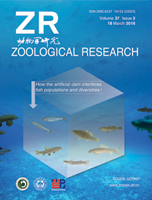
|
Zoological Research
Kunming Institute of Zoology, Chinese Academy of Sciences
ISSN: 2095-8137
Vol. 25, No. 1, 2004, pp. 73-80
|
 Bioline Code: zr04014
Bioline Code: zr04014
Full paper language: Chinese
Document type: Research Article
Document available free of charge
|
|
|
Zoological Research, Vol. 25, No. 1, 2004, pp. 73-80
| en |
Detecting Natural Selection at the DNA Level
ZHOU Qi WANG Wen
Abstract
In the 1960s,the neutral theory proposed by Kimura caused an unprecedented challenge to the classical Darwin's theory of natural selection.However,recent advances in evolutionary genetics have provided a great deal of evidence on the role played by natural selection at the DNA level.These progresses have been stemmed from the appearance of enormous DNA sequence data of populations and genomes as well as the development of theoretical population genetics.There are mainly two kinds of approaches to detect selection at the DNA level:intraspecific polymorphism tests and interspecific divergence tests.The former one is represented by Tajima's (1989) D test while the latter one is based on the principle that the intraspecific polymorphism should be consistent with the interspecific divergence under neutrality.These methods are usually called "neutrality tests" because the neutrality hypothesis is taken as the null hypothesis in the tests.They are important tools not only in solving the basic theoretical questions in evolutionary biology but also in interpreting data and results obtained in the studies of human genetics and bioinformatics.In this paper,we shall review the progresses in detecting natural selection at the DNA sequence level and introduce the basis and application of several widely used tests.
Keywords
Natural selection; DNA; Statistical test
|
| |
© Copyright 2004 Kunming Institute of Zoology, the Chinese Academy of Sciences
Alternative site location: http://www.zoores.ac.cn/
|
|
